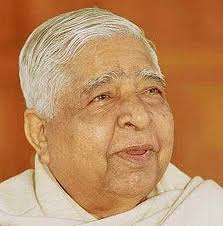The last two articles in the series, “Time to Complete Old Issues,” are published in the pages column. The URLs are:
“Time to Complete Old Issues – Part 5: What Can Go Wrong?”
“Time to Complete Old Issues – Part 6: Philosophical Considerations”
Although I’ve published a number of articles on the subject, I’ll only be adding to and updating this series.
The “Be With and Observe” process is one you can use on any unwanted condition. Theoretically it should clear any circumstance right up to Ascension, but that’s just a guess.
We spoke earlier of trim tabs and clearing your vasanas has to be the single most influential, most effective trim tab I can think of. It releases energy and restores us to our natural condition, our original face, our fundamental essence. I consider it a better and easier process than many forms of meditation.
It works to acknowledge one’s sources. I owe a debt of gratitude to Werner Erhard who started me on this process with his own, called “being with what is like a brick in the lap,” taken from the est Training. I’m also grateful for so many other notions to Werner, including that of resist, resent, and revenge. Werner is one of the most fertile wayshowers of our time and fortunately he is still with us.
In terms of its formulation, I owe another debt to S.N. Goenka who, in his Vipassana meditation workshops, used the phrase “be with what is and see what arises.” Goenkaji’s Vipassana meditative technique is an excellent means of removing the vasanas.
And I owe a debt to Charles Berner and his Enlightenment Intensives, including to my local teacher Murray Kennedy, for offering a setting and a process which allowed me to experiment with these techniques for a number of years. I didn’t reach enlightenment in the intensives but I did clear an ocean of vasanas which even enlightenment is not guaranteed to remove.
Sooner or later the work of removing the vasanas has to proceed. We can’t count on enlightenment to remove them. The reason why so many spiritual masters go off the rails is that they haven’t yet cleared their vasanas, especially the strongest which are those related to sexuality, which reassert themselves after enlightenment.
My satguru, Sri Ramakrishna, used to say:
“You may discriminate, saying that the ego is nothing at all; but still it comes, nobody knows from where. A goat’s legs jerk for a few moments even after its head has been cut off. Or perhaps you are frightened in a dream; you shake off sleep and are wide awake, but still you feel your heart palpitating. Egotism is exactly like that. You may drive it away, but still it appears from somewhere. Then you look sullen and say: ‘What! I have not been shown proper respect!’” (1)
What he’s saying is that one may experience Brahmajnana, nirvikalpa samadhi, or seventh-chakra enlightenment, but until one reaches complete freedom at sahaja samadhi, the ego, or our vasanas, returns. Until they are annihilated, we are not safe. Said Ramana Maharshi:
“Only one who is free from all the latent tendencies (vasanas) is a Sage.” (2)
“In kevalya nirvikalpa samadhi, one is not free from vasanas and does not, therefore, attain mukti [or liberation from birth and death].
“Only after the sanskaras [impressions or vasanas] have been destroyed can one attain salvation. …
“Even though one practices kevalya nirvikalpa samadhi [i.e., Brahmajnana] for years together, if one has not rooted out the vasanas, he will not attain salvation.” (3)
Why will he not? Because the human being was so designed that our natural condition of love and light is overshadowed by our conditioning, thoughts, beliefs, or vasanas. We are obliged to transcend that conditioning. That is our assignment in life. That is what lies at the heart of the game of life.
So this work cannot be postponed forever. Sooner or later, unless the rising energies do it for us, which is a possibility, we all must develop a means of uprooting the vasanas or completing our issues and upsets.
Footnotes
(1) Paramahansa Ramakrishna in Nikhilananda, Swami, trans., The Gospel of Sri Ramakrishna. New York: Ramakrishna-Vivekananda Center, 1978; c1942, 210.
(2) Sri Ramana Maharshi, Spiritual Instruction of Bhagavan Sri Ramana Maharshi. Eighth Edition. Tiruvannamalai: Sri Ramanasramam, 1974, Chapter 2, Question 26.
(3) Sri Ramana Maharshi, Swarnagiri, Ramanananda. Crumbs from His Table. https://www.ramana-maharshi.org. Downloaded 10 September 2005, n.p.




